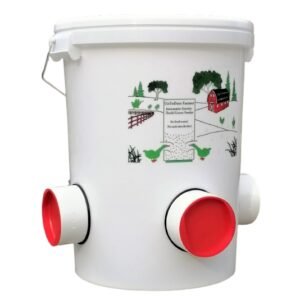Salmonellosis is a bacterial infection caused by various Salmonella species, primarily S. pullorum, S. gallinarum, and S. enteritidis. It’s a significant zoonotic disease affecting both poultry and human health.
SYMPTOMS
CAUSES
PREVENTION
TREATMENT
Symptoms
- General Symptoms (All Poultry):
- Depression and lethargy
- Decreased feed consumption
- Diarrhea
- Dehydration
- Increased mortality
- Specific Manifestations:
- Chickens:
- White diarrhea in chicks
- Respiratory distress
- Joint inflammation
- Reduced egg production
- Poor growth
- Turkeys:
- Central nervous system signs
- Lameness
- Twisted necks
- Higher mortality in poults
- Waterfowl:
- Generally more resistant
- Mild symptoms
- Can be asymptomatic carriers
- Chickens:
Causes and modes of transmission
- Bacterial Characteristics:
- Multiple Salmonella serotypes
- Environmental persistence
- Heat and drug resistance
- Transmission Routes:
- Vertical (through eggs)
- Horizontal (bird to bird)
- Contaminated feed/water
- Environmental contamination
- Rodent vectors
- Human carriers
Prevention strategies
- Biosecurity:
- Strict hygiene protocols
- Pest control
- Clean water supply
- Feed management
- Sanitation:
- Regular cleaning/disinfection
- Proper waste management
- Equipment sterilization
Treatment options
- Immediate Actions:
- Isolation of affected birds
- Antibiotic therapy (under veterinary guidance)
- Supportive care
- Supportive Treatment:
- Electrolyte replacement
- Vitamin supplementation
- Temperature management
- Stress reduction
Note: Treatment should always be under veterinary supervision due to antibiotic resistance concerns and public health implications.


